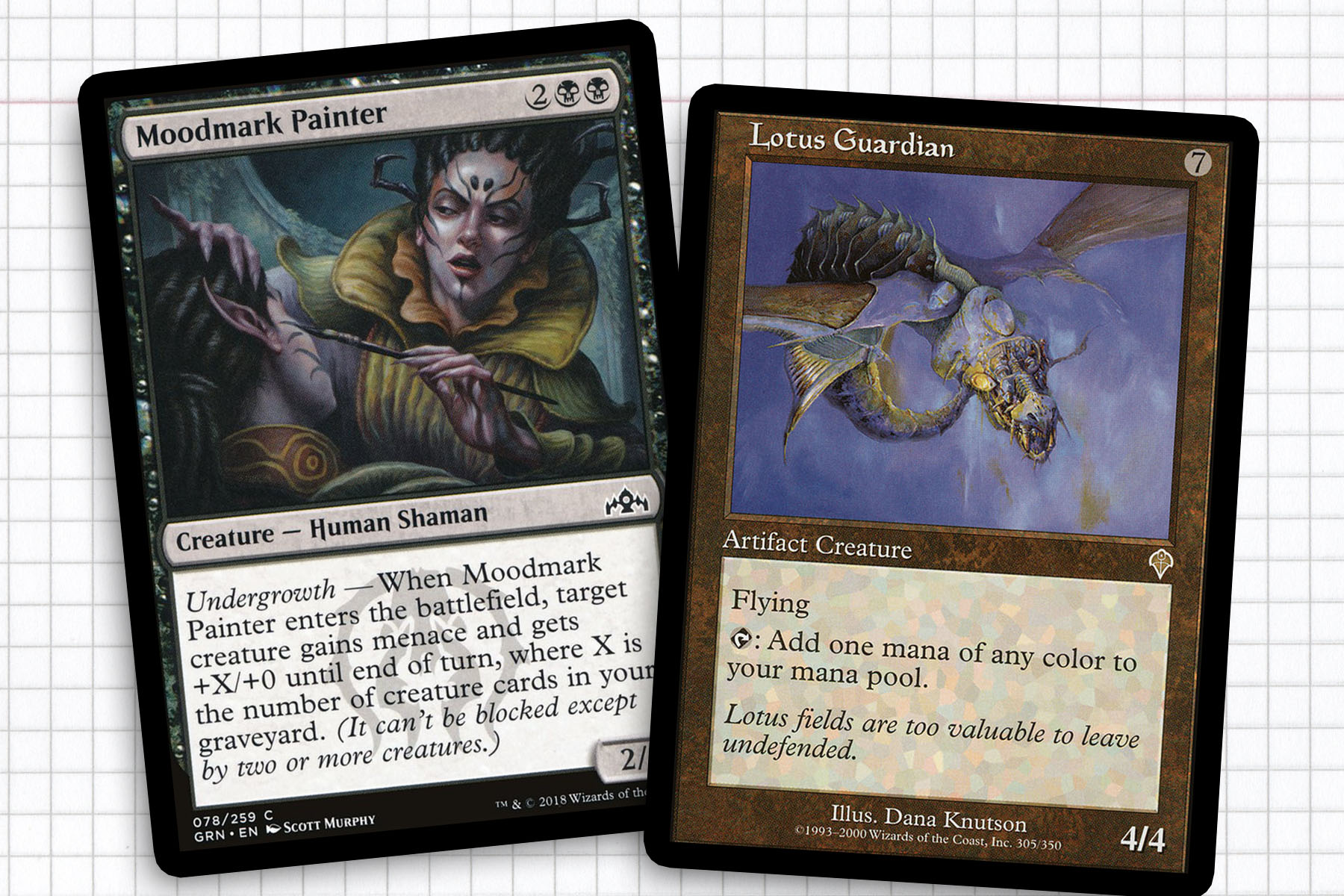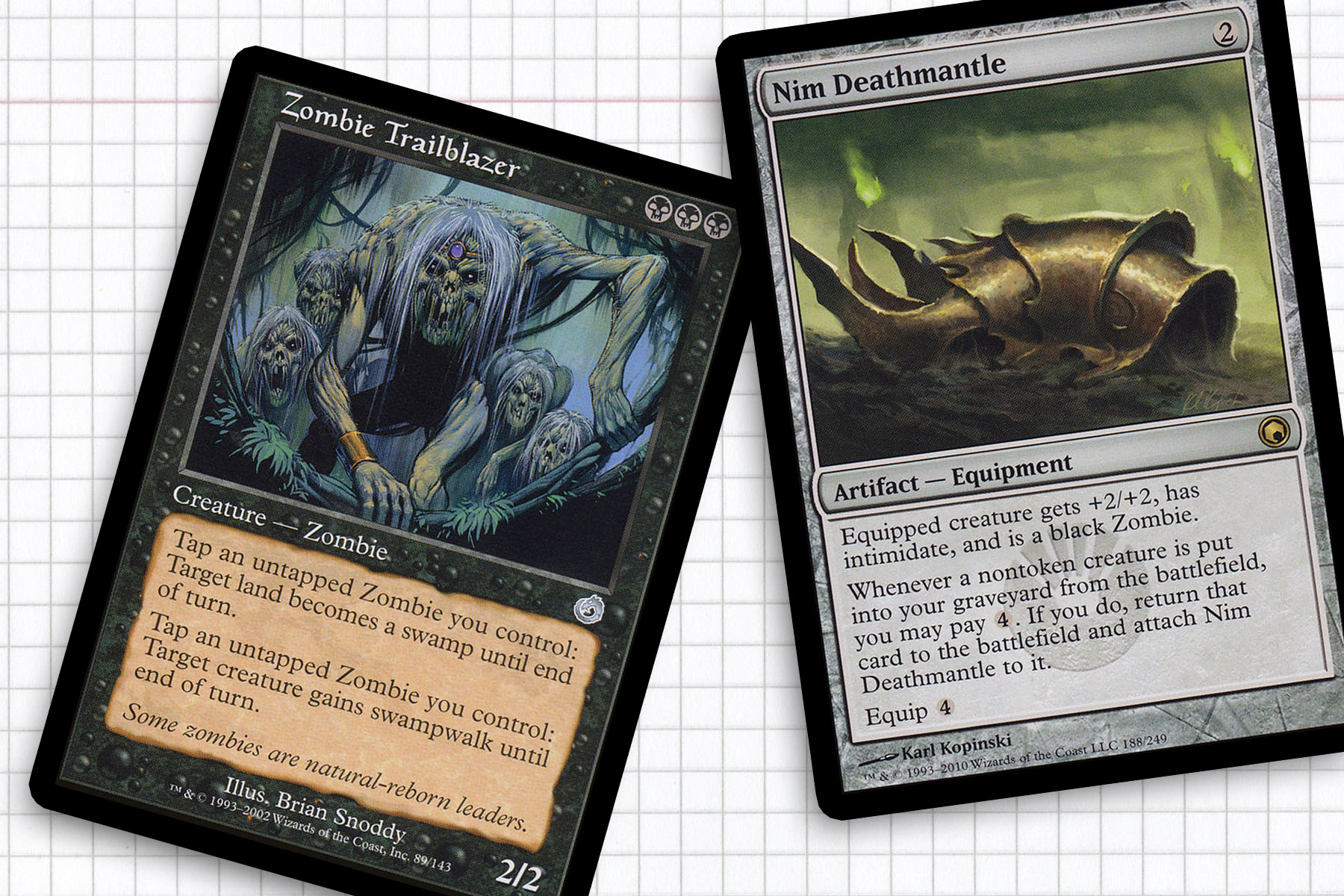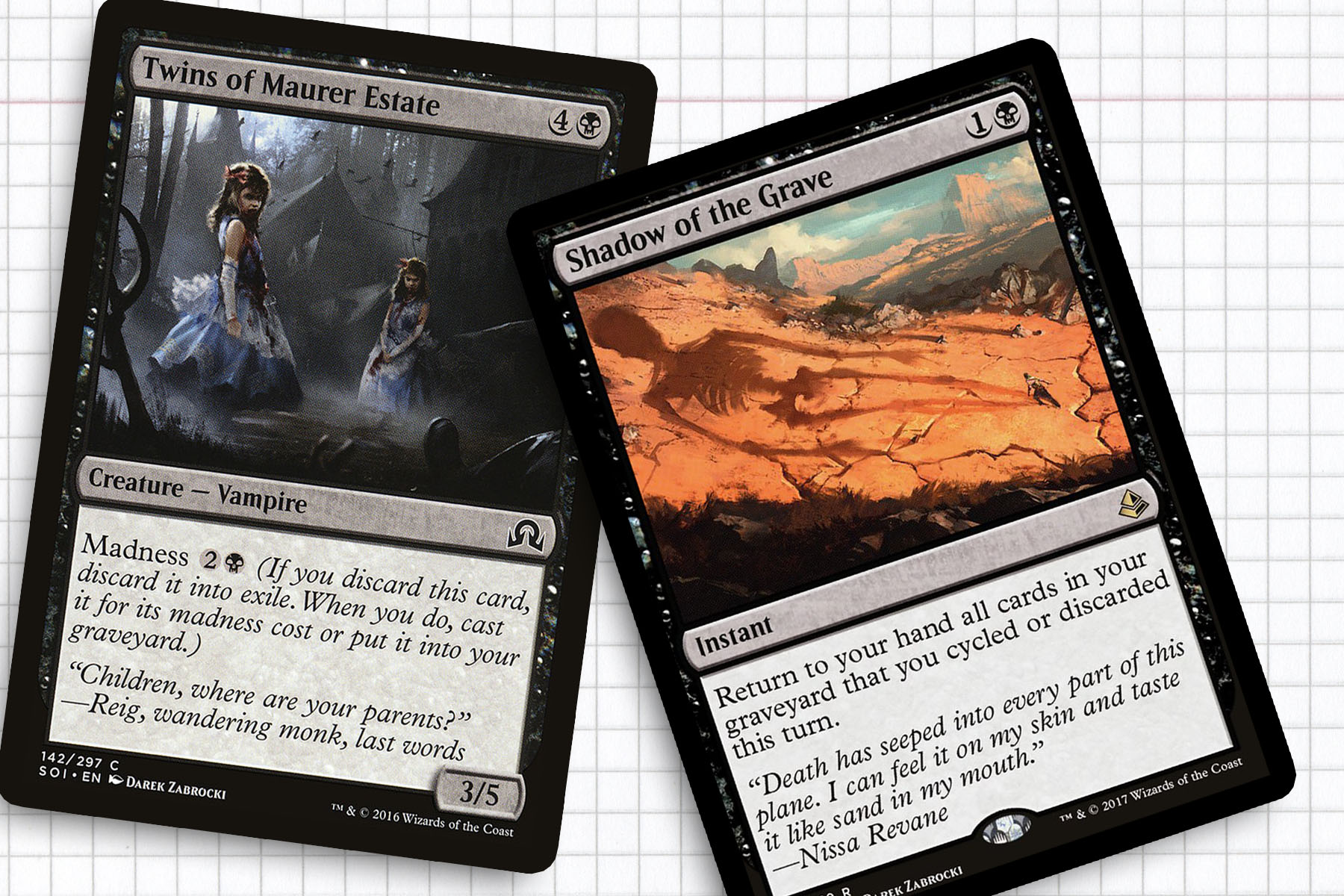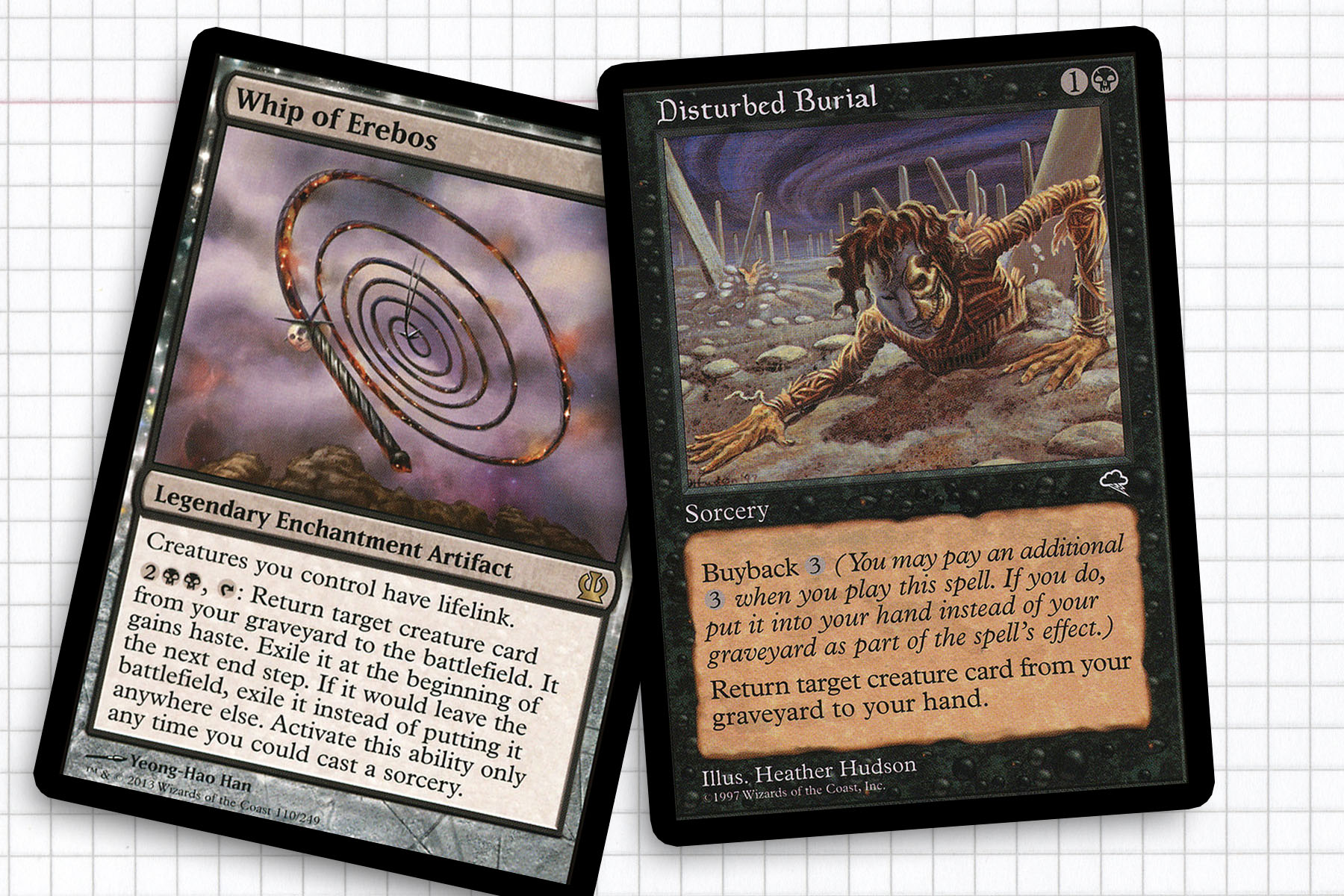Hello everybody, welcome to 2019! Last year was a transformative year in my life and it’s weird to think that it’s already over. I wrote a lot of articles, got a preview card, and felt like I was coming into my own with my written voice. If I could pick my crowning achievement, it was publishing two full articles on back-to-back days discussing the marquee generals from Commander 2018, because they required me to be on my game for the entire week. Here’s hoping I can surpass that achievement this year.
But that’s not why you came here. You came for an article about a Commander general. To kick off 2019, my first inclination was to cover a general from the 19th expansion of Magic only to discover that that expansion would be Nemesis, which had some slim pickings in terms of legendary creatures. But after some peer pressure from The Vorthos Cast’s Loreley, I needed to rise to the occasion to reassess my initial bias and have concluded that something special can be made from today’s topical general, Volrath the Fallen.

A Nemesis from Nemesis
Likely the most storied legendary creature I have spotlighted, Volrath was a major antagonist within the Magic Story for much of the Weatherlight Saga spanning from the set Weatherlight to Apocalypse. As the Evincar of of the Stronghold on Rath, Volrath was one of the higher-ups of the Phyrexian army looking to invade Dominaria. There’s a lot more to his story—hop over to Gamepedia for the full story.
As a card Volrath the Fallen is fairly simple. But after imagining the possibilities, I see Volrath is a very strong glass cannon at the helm. In the simplest terms, I see this deck as a mono black “Undergrowth deck” that skews towards a creature-heavy build, filling the graveyard en masse. Any chance to pull out a copy of Reprocess is the sign of a good deck. From there, we will be looking to take advantage of the graveyard through specialized creatures like Mortivore and undergrowth cards like Moodmark Painter or Mausoleum Secrets.
To best take advantage of Volrath’s ability, the creatures we’ll be discarding should have a high converted mana cost. I’m thinking Delraich, Draco, and Lotus Guardian can finally have their moment to shine. And since the ability only costs us two mana each time, even creatures that can imitate a Titanic Growth if and when their normal utility has expired will be fine for the purpose of the deck. My blind spot with Volrath was probably just how different playing him will probably be to my normal game play. While I value keeping cards in my hand and on the battlefield, Volrath circumvents those notions with reckless abandon.

Fast Victories
Admittedly, I often don’t slot in Lightning Greaves. It’s probably some self-righteous notion that I can win without having to protect my general so intensely and also wanting to be different for the sake of it. But as I said before, I see this as being a glass cannon, due to its effective but fragile win conditions. What I’m really interested in for this deck though is the haste we get from the Greaves, as being able to drop Volrath and discard a few spells for a quick KO is going to be a very important trick in our arsenal.
Beyond shroud and haste, other forms of evasion are going to be very important as well. Black’s typical brands of combat evasion are swampwalk and fear/intimidate, both of which take advantage of the other’s failings. In Commander, it shouldn’t be too hard to have someone at the table playing with Swamps; so granting swampwalk through Filth, Leshrac’s Rite or Zombie Trailblazer can mean that you’ll always be able to get through. On the flip side, having access to fear/intimidate through Dragon Shadow, Nim Deathmantle, and Shizo, Death’s Storehouse will mean you have way to get damage through against anyone not playing with black or artifact creatures.

Oh, the Madness
Because our deck will be so heavily slanted towards creatures and discarding them, I think it’s a very good idea to take advantage of the madness mechanic and the discard matters theme of Amonkhet block. Both of these themes have shown a lot of potential in Commander, but I admit I’ve never connected this interaction to make the two themes the driving force of interaction of a deck. The synergy with madness has existed for the entire lifetime of Commander, just waiting to be used. The idea being that discarding madness through Volrath means that we can be effectively casting Big Game Hunter, Gorgon Recluse, or Twins of Maurer Estate at instant speed while also pumping our general momentarily. This is made all the better by the fact that he doesn’t tap to do his trick, meaning we can madness cards out as long as we have ample mana.
Archfiend of Ifnir might be the most important creature to complement Volrath’s ability, permanently shrinking your opponent’s creatures with each activation. But the discard shenanigans can be further exploited for a free Hollow One or resetting your hand with Shadow of the Grave. Cycling is also a good mechanic to keep in mind—at worst the mechanic helps to smooth out draws and replace dead cards in our hand. Even if we’re not discarding to our general, Decree of Pain, Twisted Abomination, and Razaketh’s Rite were all cards that I would have gladly had in my deck any way. And by extension, replacing a few Swamps with Barren Moor or Desert of the Glorified isn’t going to slow our momentum either.

The Repurposed Graveyard
It’s no secret that black is very proficient at using creatures in the graveyard, but this deck does that a little differently. Much like how a Borborygmos Enraged deck is looking to get lands on top of the library or into its owner’s hand, I will be looking for ways to get creatures into my hand, not into play. Dredge sounds best at that, but with only three options, I would only include Stinkweed Imp, as it offers the greatest dredge with a solid blocker if we get around to casting it. It’s important to consider Golgari’s other outing, however, by including Zanikev Locust and Terrus Wurm as big bumps for Volrath in the short term while being sources of +1/+1 counters in the late game.
As I pulled my focus back, I wanted to find a recurring Raise Dead effect and unfortunately could only find Haunted Crossroads, Disturbed Burial, and Phyrexian Reclamation to satisfy our needs. Due to how quickly Volrath can remove a player from the game with the proper set up, its entirely possible that we won’t require that many outlets to refill our hand with good discard fodder and these three can be all we need. But I do think we’ll ultimately want to be recycling our graveyard with Hell’s Caretaker, Whisper, Blood Liturgist, and Whip of Erebos to get our higher cost creatures cheated into the game. And I’ve always wanted to find a home for Soulflayer, which seems useful here.
I’ve never talked in a full article about the history of legendary creature design, but I think Volrath the Fallen is a good example of how—in some ways—older designs where Commander wasn’t at all in the minds of the designers sometimes yields more interestings creatures to helm a Commander deck. I think that has a lot to do with the underlying quality of what players love about Kamigawa as well: a large grouping of legends that do non-linear things and ask of a deck builder to figure out the puzzle. Volrath the Fallen isn’t going to sweep games at your card shop all night, but it might be able to sneak in a few wins by simply not being a known a quantity or the usual fare.
Once again, thank you for following me into the new year.
Ryan Sainio is a Graphic Designer who writes about EDH, the EDH community, and streams on Twitch in his down time. He has been playing Magic: The Gathering since 7th Edition in 2002 and values flavorful and fun gameplay over competitively optimized decks. Join him for a stream at twitch.tv/hipstersainio on Tuesday nights.

